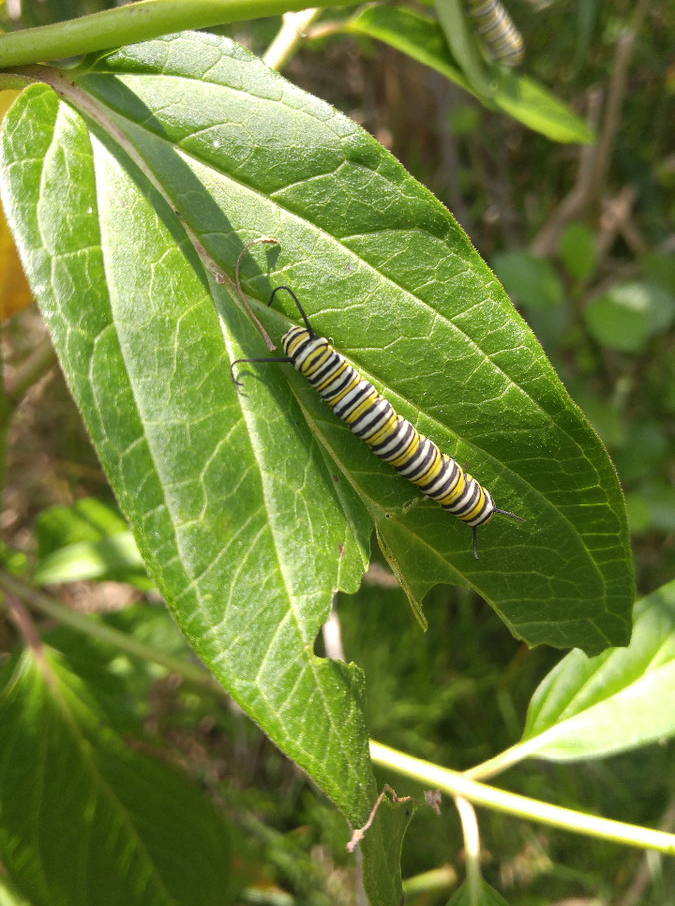
We collect basic website visitor information on this website and store it in cookies. We also utilize Google Analytics to track page view information to assist us in improving our website.
Written by: Summer Graham
Plants and animals within an ecosystem interact with each other through a variety of mechanisms. Some plants and animal species become so dependent on one another that they can co-evolve , meaning that one species can affect another species’ evolutionary adaptations because of the reproductive success gained by interacting with one another. These natural interactions between species gained over thousands of generations can be interrupted by replacing native flora with non-native flora, and can negatively impact the wildlife that rely on these relationships for success. Here we will examine different types of interactions between plants and animals and discuss some of the evolutionary traits that have become apparent as a result.
Herbivory
One of the most common interactions between plants and animals is  herbivory. The pressures of herbivores consuming plants over thousands of generations may result in plants evolving compounds that deter wildlife (such as toxins in leaves or spicy fruit). Although herbivory is often seen as beneficial to wildlife and detrimental to plants, partial grazing by herbivores can also benefit plant communities. For example, Tent Caterpillars grazing on leaves in canopy trees in a forest can lead to an increase of sunlight in the sub-canopy, shrub layer or forest floor, which can benefit the growth of these lower species.
herbivory. The pressures of herbivores consuming plants over thousands of generations may result in plants evolving compounds that deter wildlife (such as toxins in leaves or spicy fruit). Although herbivory is often seen as beneficial to wildlife and detrimental to plants, partial grazing by herbivores can also benefit plant communities. For example, Tent Caterpillars grazing on leaves in canopy trees in a forest can lead to an increase of sunlight in the sub-canopy, shrub layer or forest floor, which can benefit the growth of these lower species.
A classic example of a close relationship between herbivore and plant species are the Monarch Butterfly and Milkweed (Asclepias sp.). Monarch larvae only eat Milkweed species, so adult Monarchs will seek out these plants specifically to lay eggs on so that caterpillars will have easy access to their food source when they hatch. Because Milkweed provides larval Monarchs with their only food source, this interaction is critical to the success of Monarch reproduction. Unfortunately, adult Monarchs can mistake European Swallowwort (Vincetoxicum rossicum) as native Milkweed and mistakenly lay eggs on this invasive, non-native species resulting in larvae that are unlikely to survive.
 Mimicry
Mimicry
Another interesting type of plant and wildlife interaction is mimicry. This occurs when wildlife evolves to mimic physical traits of plants that occur in their environments, allowing them to camouflage and hide from predators or easily hunt unsuspecting prey. In Canada, the Common Walkingstick (a.k.a stick bug) and many species of Katydids have evolved to resemble branches and leaves of the plants they live and feed on.
Pollination and Dispersal
Pollination and seed dispersal are similar interactions that allow wildlife to aid in the reproductive cycle of a plant species.
Pollination involves the transfer of pollen from one plant to another plant of the same species, allowing the plant species to successfully reproduce while providing the animal with a delicious snack. While some plants rely on wind for this to occur, others have evolved closely alongside native animal pollinators such as bees, butterflies, moths, birds, and bats. Many plants have evolved certain traits such as flower size, shape, smell, and colour to attract the specific animal needed to have successful pollination occur.
Seed dispersal occurs after successful pollination when the fruit and seed have developed in a plant. In order for seeds to successfully produce a new plant, they often need to be moved away from the parent plant. Similar to pollination, some plants rely on seed dispersal via wind, while others rely on wildlife to disperse seed in the following ways:
These are only a few different ways that plants and wildlife have evolved to interact together, and the relationships between them may be more complex than we currently know. From what we do know, it is clear that a shift from native to non-native vegetation can result in impacts to wildlife that have evolved to rely on critical interactions with native flora, making it all the more important to plant native species when we can!
Additional Reading
Brooklyn Botanic Garden - Plant/Animal Relationships
Plant Life - Animal Plant Interactions
Join our email list to receive occasional updates about Network of Nature and ensure you get the news that matters most, right in your inbox.